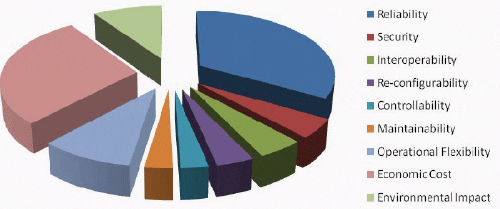Substation role in the power system
An electrical substation is a part of an electricity generation, transmission and distribution system where voltage is transformed from high to low or in reverse using transformers. It also serves as a point of connection between various power system elements such as transmission lines, transformers, generators and loads.
To allow for flexibility in connecting the elements, circuit breakers are used as high power switches.
Electric power may flow through several substations between generating plant and consumer, and may be changed in voltage in several steps.
There are different kinds of substation such as Transmission substation, distribution substation, collector substation, switching substation and some other types of substation.
The general functions of a substation may include:
- Voltage transformation
- Connection point for transmission lines
- Switchyard for network configuration
- Monitoring point for control center
- Protection of power lines and apparatus
- Communication with other substations and regional control center
General criteria for substation design
For the substation development to reach its technical and economical potentials, the focus has moved now to studying how substations may enable more intelligence in the network, which is labeled the “smart grid” development.

It has been concluded that the 21st century substation design should meet the following improved criteria: reliability, security, interoperability, re-configurability, controllability, maintainability, flexibility, reduced cost and environmental impact. An estimate of the importance of the different criteria is shown in Figure 1.




What a fantastic article on the role of substations in the power system! Your clear explanations and insightful analysis really highlight their importance in maintaining a stable and efficient electricity supply. I especially appreciated the detailed overview of how substations manage voltage levels and enhance grid reliability. Thank you for shedding light! Sidney De Queiroz Pedrosa
ReplyDeleteAbsolutely! Substations play a crucial role in the power system by transforming voltage levels to ensure efficient electricity transmission and distribution. They help manage the flow of electricity, maintain stability, and improve the reliability of power supply. Many thanks! Beatriz Barata
ReplyDeleteThis is a well-written and informative article that effectively explains the essential role of substations in the power system. The clear breakdown of functions such as voltage transformation, protection, and the integration of smart grid technology adds significant value to understanding how substations contribute to grid reliability and efficiency. I especially appreciate how you highlighted the evolving design criteria for modern substations. It's a comprehensive overview that will benefit both industry professionals and those new to the subject. Keep up the great work! Global Talent Pathway
ReplyDelete